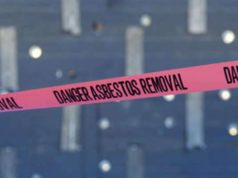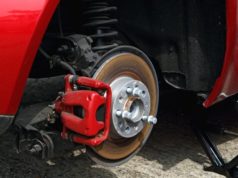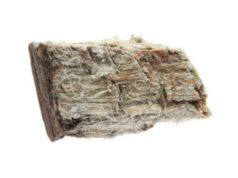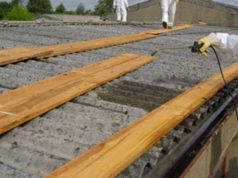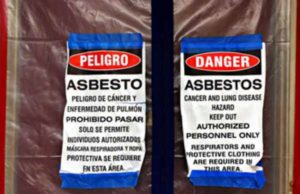
Ohio has one of the highest rates of asbestos related illnesses in the nation, due largely to the presence of heavy industry. Heavy industry widely used asbestos containing materials for insulation and heat-proofing machineries, in addition to the production of products containing asbestos. Car brakes for example, have asbestos brake pads for centuries and not only are workers at danger of being sickened by their work, mechanics that do not take proper precautions will face the same dilemma.
Functions of the EPA
The Ohio EPA will manage all regulations related to the disposal of asbestos containing materials and compliance with the National Emissions Standards for Hazardous Air Pollutants, which is a federal mandate. The EPA will ensure and facilitate the delivery of construction waste and asbestos containing materials are delivered the appropriate disposal site. The EPA also ensures that the proper arrangements are made to prepare the materials for storage at the facility.
Contractors and other parties generating the waste must complete the appropriate forms and this form is signed by the driver and the manager of the disposal facility. The form is sent to the contractor upon notification of items for disposal. The contractor will have ten days to return the completed form
Functions of the ODH
The ODH will certify and license asbestos contractors, inspectors and professionals to work with asbestos containing materials. Certification focuses on asbestos safety training, proper abatement procedure and the health hazards of asbestos. All training courses are accredited by the ODH prior to accepting students. Notifications of asbestos abatement are made directly to the ODH through an automatic electronic system. On this system, you will account for the asbestos in the building, the contractor performing the work and the plans to dispose of the material.
Home asbestos contamination
Most homes built before a 1979 ban on asbestos in construction products are likely to have some form of asbestos. This includes applications in the home, such as plaster and soundproof ceilings, as well as roofing and siding outside the house. Not all applications of asbestos are immediately dangerous. As long as the asbestos remains within the home in a sealed container or indurate material, the harmful material poses no risk of becoming airborne. The only exception is when these materials are breached during renovation. No asbestos containing materials are allowed in a structure undergoing demolition. Some materials may remain in the building if it is undergoing renovation and the materials will not be disturbed
Friable asbestos
The biggest danger in both workplaces and homes is friable asbestos. Friable asbestos will become airborne with ease and will be broken with minimal human contact. Controlling this form of asbestos is necessary through abatement or tactically sealing it with a sealant or other indurate material. Friable asbestos is present in most fireproofing materials, which does degrade over time. Laboratory testing can confirm the presence of both airborne asbestos fibers as well as the source of the contamination.
Asbestos litigation
You will be able to file for asbestos litigation and the Ohio courts system will have a system to allow merit-able lawsuits to proceed. Unlike other states that allow for lawsuits based on possible exposure, you must have an asbestos related illness to file an asbestos lawsuit.


